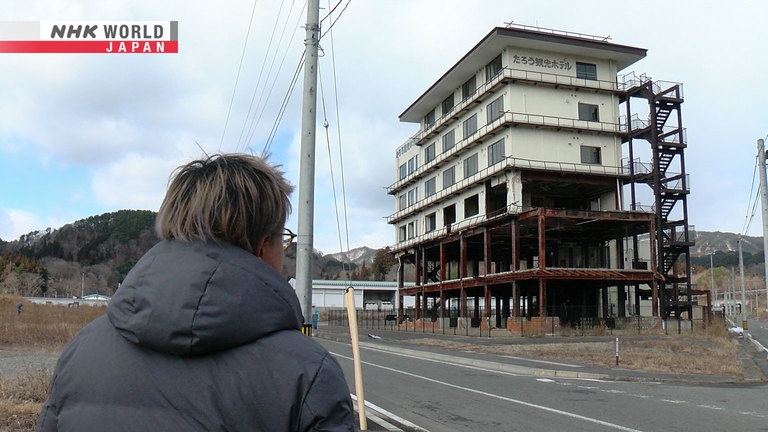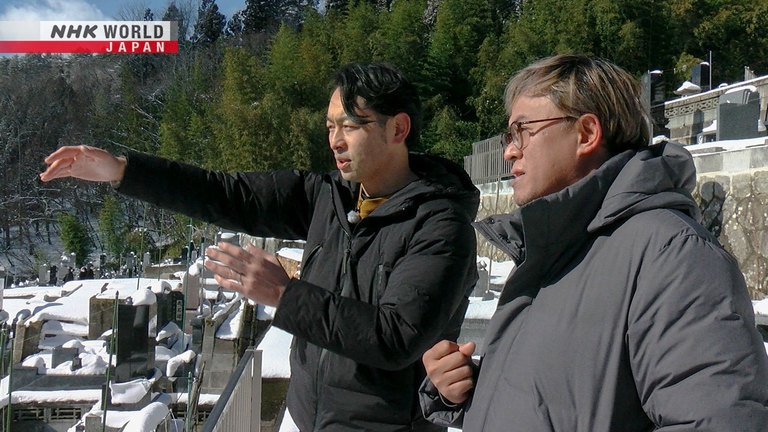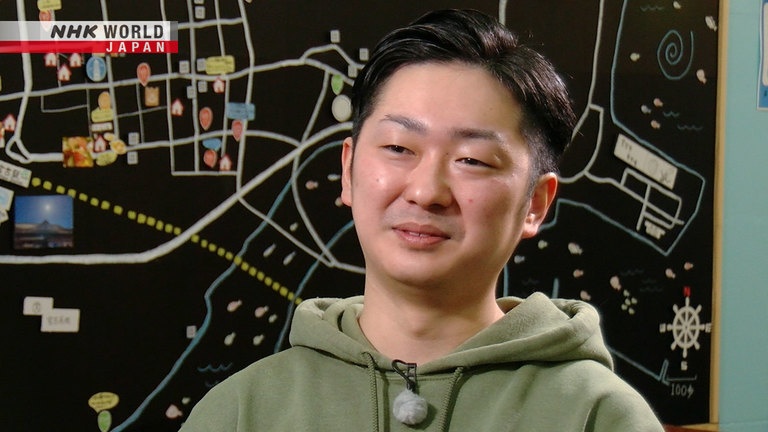Living With Natural Disasters
Thai language reporter for NHK WORLD-JAPAN Chairat Thomya visits the district of Taro in Miyako City, Iwate Prefecture. It was part of the region ravaged by the tsunami of the 2011 Great East Japan Earthquake. Through talking with the residents of Taro who've experienced the tragedy, Chairat looks to find out how people can live with and pass on the memories of natural disasters.



Transcript
In February 2023, I revisited a town in Northeastern Japan for the first time in eighteen years.
It's part of the region that was ravaged by the tsunami of 2011, which made countless victims.
More than 18,000 people have been reported dead or missing nationwide.
I'm Chairat Thomya, Thai language reporter for NHK World Japan.
Today I come to Taro District in Iwate Prefecture, Northeastern of Japan.
On March 11, 2011, a huge quake hit this area and caused a massive tsunami that even a ten-meters high seawall failed to stop.
I spoke with some of the locals to find out how we can live with - and pass on the memories of natural disasters.
Nineteen years ago, in 2004, a disaster occurred that changed my life as a journalist.
The Indian Ocean tsunami hit the coasts of Indonesia, Sri Lanka, Thailand and other countries.
Over 220 thousand people died or went missing.
Right after, I started reporting live from a studio in Bangkok.
I was surprised and shocked...
because there had never been
a tsunami recorded in Thailand before.
I myself didn't know about tsunamis.
To learn more about preventive measures against tsunamis, I came to Japan and visited Taro the following year.
The area's coastline was already fortified by a ten-meter-high seawall that totaled more than two kilometers in length.
The town had been hit by tsunamis in the past, and so the wall was built.
But it proved insufficient for the tsunami of 2011.
There were houses, buildings and shops around this area.
But now: nothing!
It's empty!
Only this hotel remained.
And you can see how powerful the tsunami was.
Even today, we can see traces of the water level that rose up to the fourth floor of this six-story hotel.
Visitors accompanied by a guide can still enter the building today.
In front of the hotel, there used to be a residential area.
The tsunami rapidly engulfed everything in its path - houses and people alike.
In Taro, it reached more than seventeen meters in height, surrounding the hotel in a muddy tide.
I met someone who lived through the disaster.
Kato Yoichiro was born and raised in Taro.
When the earthquake occurred, he was about five hundred meters from the coast.
Hearing the tsunami warning, he hurried to an evacuation site on high ground.
The tsunami crashed
against the seawall.
I saw dark splashes above the wall.
Then I saw houses get swept away.
The flow of water kept closing in on us.
Fearing for his safety, he decided to flee to an even higher spot.
After reaching a mountainside cemetery, he watched the tide swallow up the town, including his house.
Yoichiro says it was thanks to a story he often heard as a child that he was able to find refuge in time.
Dad shouted, 'A tsunami!
We have to run!' The story was written by Tabata Yoshi.
Ever since she experienced a tsunami in 1933, she continued to remind local children to run for high ground in case of an earthquake.
However, a total of 181 residents of Taro died in the 2011 tsunami - among them were friends and relatives of Yoichiro.
Each and every one
of those 181 people had a name.
We don't see it as, 'At least, the number
of victims was relatively small.' We lost people we knew
and spoke to every day.
It was a horrible tragedy.
Yoichiro has been telling visitors to Taro about his own experience and the region's history with tsunamis.
He even relates his story in English to tourists from abroad.
Worried that memories of the tsunami are fading away in Thailand, I asked Yoichiro what was most important to remember.
We can't win against nature.
I must continue to tell visitors to Taro
and the younger generations.
In response to the declining population in the stricken regions, Yoichiro started a project with some friends to draw people to his hometown.
They set up a guest house in the center of Miyako City.
- I'm Chairat.
- Nice to meet you. I'm Jun.
Staff member Murai Jun was born in Taro.
He was fourteen when the tsunami hit the town.
His house near the coastline was swept away.
He worked hard to help Taro recover.
But eventually, the expectations from the people around him felt more and more like a burden.
People saw me as the 'future of the town.' To me and others of my generation,
it felt like it was our duty.
I wasn't thinking about
my own future and happiness.
I felt I had to work hard and devote
myself entirely to the town's recovery.
Jun's unease kept growing.
He then quit university and began to search for what he wanted to do with his life.
He was drawn to guest houses and how they create opportunities for people to meet.
He set off to work and live in guest houses all over Japan.
Then, five years ago, he and his friends founded this guest house.
He describes the casual conversations he has with guests as "priceless."
He no longer feels the pressure of being a "youth from the disaster area."
He gladly talks about his own experience of the tsunami to anyone who wants to hear it.
I feel I can live the way I want to.
Of course, I'll continue
to share my experience.
If it can help people during a disaster,
I'm more than happy to share my story.
Ever since my homeland was hit by a tsunami in 2004, I've been covering stories on natural disasters.
Revisiting Taro and talking with the people here who've lost their homes and loved ones has truly been a learning experience.
In your area, what kind of disasters
are likely to occur?
Do you know what to do when disaster strikes?
These seem to be simple questions, but they're very important.
It has been proved so many times that human beings cannot win over Mother Nature, but we can reduce loss by sharing experiences, preparing for dangers and being vigilance.
That may be the answer for how can we live with disasters.